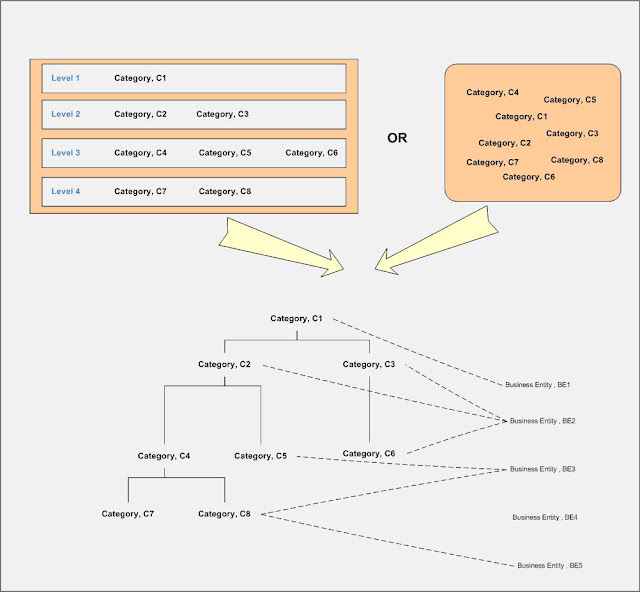In any software system categorization of business entities is one of the most common features. During the course of creating product definition of one of the product under my portfolio, I again I encountered the dilemma of efficient categorization of business entities. To appreciate various categorization schemes available, I like to share with wider audiences and like to know are there any other possibilities exist.
Scheme 1: This is the traditional approach where categories and sub categories form a tree structure (each category as node) and business entities represent leaf under one node.
This scheme might have variation in terms of depth and breadth of tree, number of business entities per category and presence of single business entity under various categories.
Scheme 2: This is the approach where categories and sub category form a tree similar to Scheme1 but business entities do not become part of tree.
In this scheme, a business entity forms association with zero or more categories and similarly a category might be associated with one or business entities. In this scheme, depth and breadth of tree are mostly dependent upon business requirements similar to scheme 1. Applications might have one or more trees as per the business requirements.
Scheme 3: In this scheme, categories are formed as orphan entities in predefined level. Later these categories are associated to form tree similar to either to scheme 1 or scheme 2.
Option 1: Similar to Scheme 1
Option 2: Similar to Scheme 2
Scheme 4: This scheme categories form graph structure and then business entities are associated later to the graph node. This scheme is difficult to process due to inherent difficulty of graph structure.
Thursday, June 3, 2010
Subscribe to:
Post Comments (Atom)









No comments:
Post a Comment